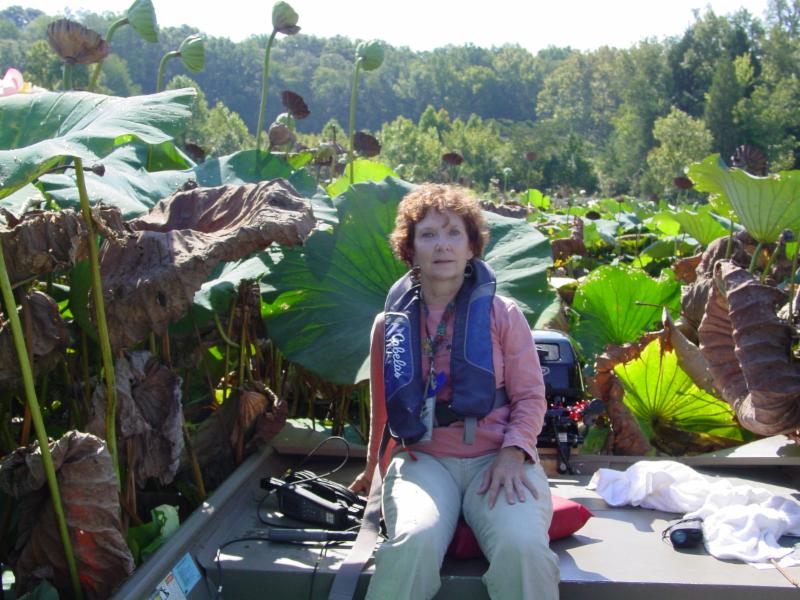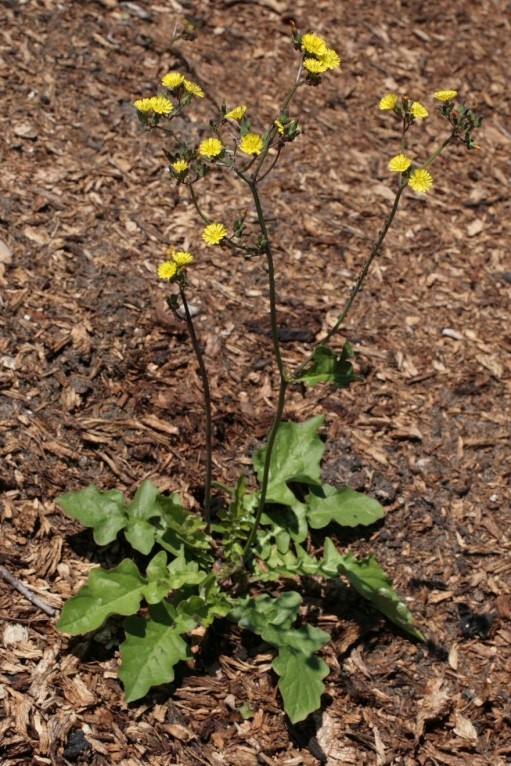Our Mission
To protect Tennessee's unique natural heritage from the ecological and economic harm of invasive plants through research, education, and policy.
|
 |
|
Kitty McCracken,
TN-IPC President
|
Letter from the President
Our organization is officially changing our name to the Tennessee Invasive Plant Council. This not only follows suit with the National Association of Invasive Plant Councils, but it reinforces our mission. We are in the process of updating our website as well, and the new format should roll out in the next couple of months, including our new logo. We are working to update our statewide list of invasive exotic plants as well. Things change fast as globalization continues, and we need to keep citizens of Tennessee informed as new invasive plants are identified and begin to become a threat across our landscape, not to mention the already established invasive plants continuing to spread throughout the state. That being said, this time of year is one of the best to control invasive pest plants at home, in parks and in other natural areas.
Unfortunately our web-site is temporarily down due to our upgrade. This should not last long and the site will be much improved. Please be patient while we conduct this necessary maintenance.
|
|
News and Resources
Most countries in the world have little capacity to deal effectively with invasive species, a study suggests.The spread of non-native species threatens livelihoods and biodiversity, but the issue is worsened by global trade, travel and climate change.
A University of Wisconsin-Madison study concludes that the estimated cost of controlling a single invasive species, the spiny waterflea, in just one lake could range from $86.5 million to $163 million over 20 years.
The dietary preferences of deer may be promoting the spread of such invasive species as garlic mustard, Japanese barberry and Japanese stiltgrass, according to a new study that tested white-tailed deer preferences for seven native and eight invasive plants commonly found in the northeastern U.S.
Nearly 60 projects are planned, including clearing brush, limbs and invasive plants, planting flowers, building trails, assisting with community events and maintaining historic features.
This study, the first to test...species with identical procedures, provides comparative evidence that supports using native plants, rather than agricultural and other nonnative species, to supply wildlife winter food.
In the United States alone, there are more than 50,000 species of invasive plants and animals that can cause harm to the environment, the economy, agriculture, and human health. A study from the University of Cornell estimates that these species cost the U.S. more than US$120 billion per year in damages and expenses associated with control and management. But they may also be a tasty source of food.
As many as one in five plants may be at risk of extinction...due to invasive species, disease and changing landscapes.
Fernbank Forest, a 65-acre treasure, has been the site of a four-year effort to remove English ivy and an estimated 40 other invasive plants. Their removal will clear the way for orchids, trout lilies, foamflower, bloodroot, doghobble, wild geranium and trillium to regain the spots they've held for millennia. The Fernbank Museum of Natural History, which owns the wood, is in charge of the project.
Amazon and eBay have been exposed as weak points in Australia's quarantine system, with the internet trading sites hosting dozens of offers to import the nation's most dangerous weeds.
Results from a five-year study published in 2014 by U.S. Forest Service researchers showed that not only can a thorough removal of privet last at least five years without a follow-up, but also that native plant and animal communities steadily return to areas cleared of the invasive shrub.
Agricultural Research Service (ARS) scientists in Stoneville, Mississippi, reviewed different programs known to successfully suppress kudzu. Mark A. Weaver, a plant pathologist in the ARS Biological Control of Pests Research Unit, and his team used a combination of these programs, including a herbicide-free "organic" system, to achieve a high rate of kudzu suppression and eradication.
Maryland is stepping up the fight against ecosystem-altering nonnative plants by banning the sale of three aggressively spreading ornamentals and requiring that warnings be posted next to retail displays of five others sold in garden stores and nurseries.
New EU regulation blacklists 37 non-native plant and animal species in a bid to tackle threats to native wildlife and economic losses
|

Featured Non-native Invasive Plant
By Allyson Arulananthian, Americorps intern for the Great Smoky Mountains National Park
False Hawksbeard (Youngia japonica) is the latest invasive plant to be seen in the Great Smoky Mountains National Park. Native to Southeast Asia, this annual herbaceous weed is common in disturbed areas, such as roadsides, shorelines and old homesites. and may flower a various heights ranging from 2 inches to 2 ft. False hawksbeard can also be found in nursery potted plants; weeds common in nurseries can easily be transported to new locations with seed in potting soil. This plant can also be transported in gravel, fill material, hay and mulch. False hawksbeard is detrimental to native flora as it competes for resources and propagates rapidly with windblown seeds. The yellow flowers and lobed leaves resemble those of a dandelion but are about half the size. Flowers grow on branched stems which may be over 2 feet tall. Another difference is that hawksbeard flowers have 5 teeth at the ends of petals. Flowers may be produced at various heights ranging from 2 inches to 2 ft. This plant is capable of spreading quickly so it is important to remove the plant before seeds are produced. When removing false hawksbeard, ensure that the entire plant has been removed from the ground or it will regrow. Plants that are cut with mowers or string trimmers will regrow quickly and form new flowering heads. Herbicide is most effective on basal rosettes prior to bloom.
|
|
|
Calendar
The Tennessee Department of Natural Resources has several guided hikes and tours planned
Forest Specific Pesticde Management Workshop
Nov 1, 2016 8:30 - 12:00
UT Arboretum - Oak Ridge, Tennessee
Nov 5, 2016
Tennessee Citizens for Wilderness Planning
Nov 14th 12:00 p.m. to Nov 15th 5:00 p.m.
Indianapolis, Indiana
September 10
Plant Form & Function, Part 1
with Richard Clements and Mary Priestley
9am-4pm Certificate in Native Plants class; open to the public
October 10 Native Plants of the Cumberland Trail with Bobby Fulcher
6:00pm FREE and open to the public at green|spaces, 63 E. Main St.,
October 22 Fall Foliage Hike with Leon Bates
Times TBA Wild Ones members only
November 5 Annual Meeting
Time TBA Wild Ones members only
November 12
Soil and Water
with Wyn Miller
9am-4pm Certificate in Native Plants class; open to the public
December 12 Holiday Social
Time TBA Wild Ones members only
|
Join TN-IPC
Membership in TN-IPC is open to anyone with an interest in the problem of invasive exotic plants, their identification, impacts, and control. Our members include professional land managers, private landowners, individual homeowners, educational institutions, conservation and gardening organizations, and government agencies.
Join us by becoming a member online, payment through PayPal.
Follow us on Facebook and Twitter
TN-IPC recently began tweeting! Click the twitter link at the bottom of this page to keep up with us on a more frequent basis. Also, please like and follow us on Facebook.
|
 
STAY CONNECTED
|
|
|
|
|